A Soviet tank mounted on a plinth outside a primary school attests to the last time the central Ukrainian town of Kagarlyk saw war up close.
The tank is a leftover from the Soviet force that routed Nazi troops from Ukraine during World War II.
More than 70 years later, tanks have again been churning up the rich black soil of Ukraine as the country’s pro-Western government battles a pro-Russian insurgency.
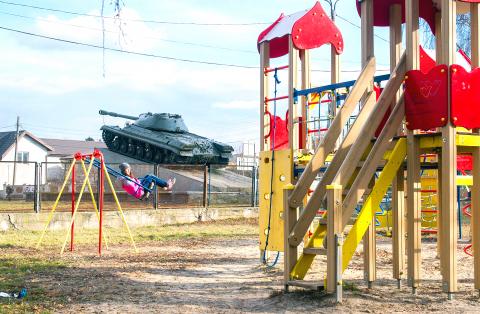
Photo: AFP
Seen on television from the comfort of a sitting room in Kagarlyk, a depressed town about 600km west of the frontline, the fighting that rumbles on at a low level despite a month-old truce seems remote.
However, Ukrainians across the country are paying a high price for the conflict in the industrial Donbass region, which accounts for nearly 10 percent of national output.
Maria Polyvaniuk, a 27-year-old mother of two who lives in a drab Soviet-era apartment block, has watched aghast as the nation’s currency nosedived in the past year, triggering astronomical increases in the prices of imported food, clothes and other essentials.
“Before, if we had something to celebrate, like a birthday, we could go to a cafe. We also ate more meat and fish,” says Polyvaniuk, a slight figure with wispy hair, describing life for a family of four on her electrician husband’s monthly salary of 2,000 hryvni in pre-war Ukraine.
That salary was equivalent to US$250 a year ago, but just US$87 today.
“Nowadays, we cook mostly simple food, like soup and rice. As for clothes, we buy less and wait for sales,” she says.
From 8 hryvni to the US dollar a year ago, the currency weakened to a record low of 33.75 at the end of last month, overtaking the ruble as the world’s worst-performing currency. The hryvnia has since rallied to 23 to the greenback, after the central bank hiked interest rates, while waiting for the IMF to confirm a make-or-break US$17.5 billion bailout on Wednesday.
However, with year-on-year inflation running at 34.5 percent last month, the purchasing power of most Ukrainians is rapidly eroding.
Polyvaniuk’s mother-in-law, a smiling woman with ruddy cheeks who has endured several bouts of hardship since the breakup of the Soviet Union, contrasts the situation with the mid-1990s, when inflation hit 10,000 percent.
“Back then, the shops were empty. This time, there are things to buy ... if you have the money,” 64-year-old Lyubov Yemets says.
In Kiev, where some people have negotiated salaries pegged to the US dollar or euro, the money is there for some things.
Bars and restaurants still do a brisk business — as did flower sellers on International Women’s Day at the weekend.
However, car traffic has thinned after a spike in petrol prices, and upscale shops are glaringly empty.
“No business: hryvnia very low, dollar very high,” says Sergiy, a Kiev vendor of Ukrainian flags, Russian fur hats and other souvenirs, spreading his arms to denote the widening chasm.
Slabs of Italian cheese costing more than a month’s salary have come to symbolize the currency crisis, but the prices of locally produced staples, such as sugar and cooking oil, have also soared because of rising transport costs.
At a Kagarlyk supermarket, an old woman could be seen spending long moments peering at the prices of liter bottles of cornflower oil before eventually opting for a half-liter.
With the country of 43 million teetering on the edge of a default, help cannot come quickly enough.
GDP contracted 7 percent last year, and Ukraine faces another 5.5 percent shrinkage this year.
The promised IMF loan is the cornerstone of an international aid package that is expected to exceed US$40 billion over four years.
However, it comes with strings attached.
Last week, Ukraine’s parliament adopted a series of reforms on which the IMF conditioned the aid, including a cut to pensions, a threefold hike in household gas prices and efforts to combat corruption.
For Olena Bilan, chief economist at Ukraine’s leading investment bank, Dragon Capital, the reforms, while “painful,” are long overdue.
“Only those who are really in need will be supported from the budget,” Bilan said.
So far, people seem to be accepting the necessity of the austerity pill, but that could change if the war drags on.
Ukrainian President Petro Poroshenko this week called on the nation to “look truth in the eye” and stay united.
“As long as there is war there will be no investment in Ukraine, and people must be told the truth,” he said in an interview on Monday last week.
Asked whether she expected a lasting peace anytime soon in a conflict that has killed more than 6,000 people, Yemets replied with an emphatic “nyet.”
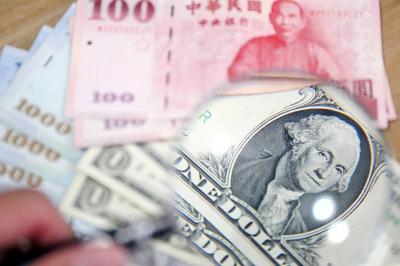
The US dollar was trading at NT$29.7 at 10am today on the Taipei Foreign Exchange, as the New Taiwan dollar gained NT$1.364 from the previous close last week. The NT dollar continued to rise today, after surging 3.07 percent on Friday. After opening at NT$30.91, the NT dollar gained more than NT$1 in just 15 minutes, briefly passing the NT$30 mark. Before the US Department of the Treasury's semi-annual currency report came out, expectations that the NT dollar would keep rising were already building. The NT dollar on Friday closed at NT$31.064, up by NT$0.953 — a 3.07 percent single-day gain. Today,
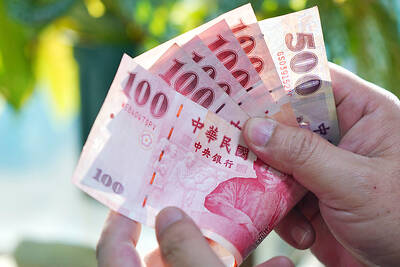
‘SHORT TERM’: The local currency would likely remain strong in the near term, driven by anticipated US trade pressure, capital inflows and expectations of a US Fed rate cut The US dollar is expected to fall below NT$30 in the near term, as traders anticipate increased pressure from Washington for Taiwan to allow the New Taiwan dollar to appreciate, Cathay United Bank (國泰世華銀行) chief economist Lin Chi-chao (林啟超) said. Following a sharp drop in the greenback against the NT dollar on Friday, Lin told the Central News Agency that the local currency is likely to remain strong in the short term, driven in part by market psychology surrounding anticipated US policy pressure. On Friday, the US dollar fell NT$0.953, or 3.07 percent, closing at NT$31.064 — its lowest level since Jan.
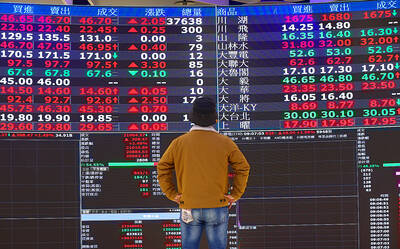
The New Taiwan dollar and Taiwanese stocks surged on signs that trade tensions between the world’s top two economies might start easing and as US tech earnings boosted the outlook of the nation’s semiconductor exports. The NT dollar strengthened as much as 3.8 percent versus the US dollar to 30.815, the biggest intraday gain since January 2011, closing at NT$31.064. The benchmark TAIEX jumped 2.73 percent to outperform the region’s equity gauges. Outlook for global trade improved after China said it is assessing possible trade talks with the US, providing a boost for the nation’s currency and shares. As the NT dollar
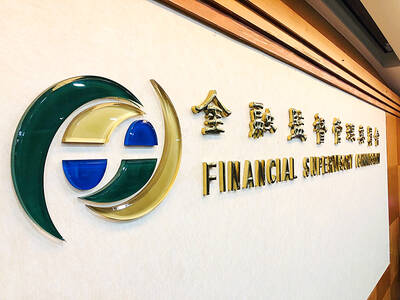
The Financial Supervisory Commission (FSC) yesterday met with some of the nation’s largest insurance companies as a skyrocketing New Taiwan dollar piles pressure on their hundreds of billions of dollars in US bond investments. The commission has asked some life insurance firms, among the biggest Asian holders of US debt, to discuss how the rapidly strengthening NT dollar has impacted their operations, people familiar with the matter said. The meeting took place as the NT dollar jumped as much as 5 percent yesterday, its biggest intraday gain in more than three decades. The local currency surged as exporters rushed to